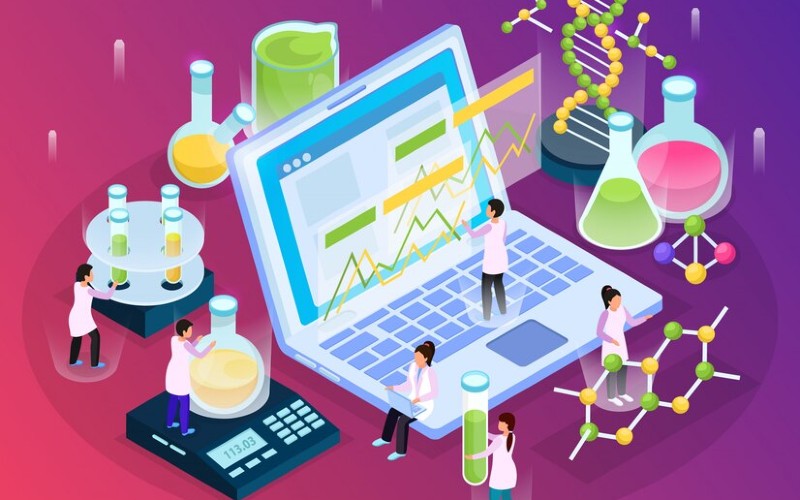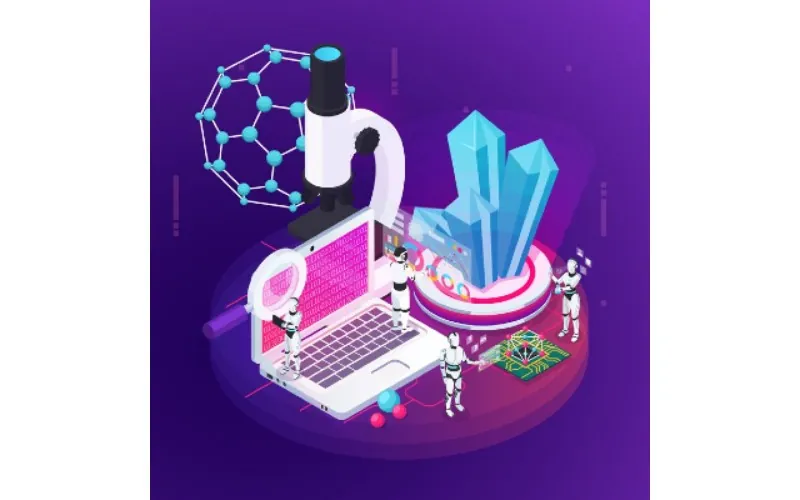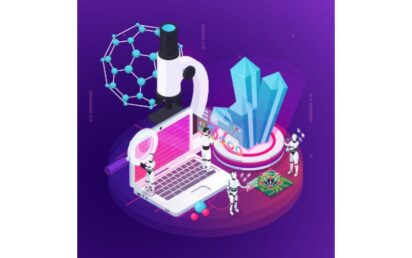Broadly speaking, artificial intelligence is a machine that replicates human cognitive abilities, including learning and problem-solving. It covers many approaches, including machine learning, deep learning, natural language processing, and more. Thanks to apps, digital assistants, recommendation systems, driverless cars, and more recently, artificial intelligence has permeated everyday life.
These days, artificial intelligence is also invading specialist fields, including law, sciences, healthcare, and more. One field that stands to benefit, especially from the growth of artificial intelligence, is chemistry. Chemistry, after all, deals with synthesis, analysis, and atomic and molecular level transformation of matter. This provides copious of sophisticated data for intelligent processing by artificial intelligence systems.
How precisely, then, is artificial intelligence changing chemistry? Which present uses are there, and what will the future look like? Let’s find out.
Current Trends and Applications
AI is already making an impact across pharmaceuticals, materials science, chemical engineering and other chemistry sub-domains. Here are some prominent trends.
Advancing Computational Chemistry
The simplest application of this technology is in tools such as the AI chemistry solver, which helps school and university students. But at another level of chemistry, there are very big advances.
Computational chemistry uses the power of supercomputers to study molecular systems in silico. However, running accurate physics-based simulations is computationally demanding.
AI promises to make such simulations faster and more precise. Machine learning potentials can reduce the complexity of quantum mechanical models. Neural networks can also predict molecular properties at a fraction of the usual computing costs.
What’s more, AI exploration of chemical space is unearthing new functional materials, catalysts and more. It allows computational chemists to investigate molecular design problems with billions of candidates efficiently.
DeepMind and other startups are pushing new frontiers in AI-driven computational chemistry.
Accelerating Drug Discovery
Finding possible medicine by means of thousands of compounds requires identification, synthesis, and testing in drug discovery. A drug may not reach the market for 10 to 15 years, depending on this long process of trial and error. Artificial intelligence promises to accelerate and enhance several phases, including:
- AI systems can quickly screen billions of molecular structures and reduce them to the most interesting candidates for additional research.
- Machine learning methods can forecast molecular bioactivity, toxicity, solubility, and other pharmacological characteristics.
- AI tools can examine molecular structures and suggest ideal synthesis routes to generate them from commercially accessible starting materials.
- Generative artificial intelligence models can directly create molecular graphs with desired therapeutic effects without reference to an existing database in de-novo drug design.
By means of such artificial intelligence support, medicinal chemists can avoid time-consuming, unfavorable compound testing. It allows them to concentrate research on the most practical pharmacological candidates.
Prominent AI startups like Exscientia, Insitro and BenchSci are leading the charge in AI-driven drug discovery. Many pharma majors are also investing in internal AI research or partnering with AI firms.
Optimizing Materials Design
Designing materials like alloys, composites, catalysts etc., with specific properties involves tweaking multiple composition and processing variables. Materials scientists usually rely on trial-and-error Edisonian methods, which are expensive and inefficient.
Instead, AI algorithms can intelligently navigate through the materials design space and predict optimal combinations of ingredients and preparation methods. Machine learning models can also predict how alterations in composition, structure or processing conditions will impact material behavior.
For instance, AI techniques are being used to design organic electronics materials, crystalline alloys, polymer membranes and more. It allows materials scientists to slash lab costs and accelerate the development of innovative materials.
Enhancing Chemical Manufacturing
The chemicals manufacturing industry handles complex, multi-step processes at massive scales. AI enables real-time monitoring of process parameters, predicts deviations, and takes corrective actions without human intervention. This allows for:
- Process optimization – AI agents can tweak parameters like temperature, pressure, flow rates etc., to maximize output and minimize waste.
- Predictive maintenance – By analyzing sensor signals, AI can detect early warning signs of equipment failure and schedule proactive repairs.
- Anomaly detection – Machine learning models can instantly detect process disruptions and trigger automated emergency responses to prevent runaway reactions.
- Production planning – AI tools can analyze supply-demand dynamics, raw material availability, etc., to schedule production runs efficiently.
The above are just some examples of AI enhancing productivity, yields, safety, and costs across the value chain of chemical manufacturing.
The Road Ahead

The applications outlined above likely represent just the tip of the iceberg. AI remains underexploited in addressing many complex chemistry challenges. As algorithms become more robust and tailored to chemical tasks, wider adoption is imminent.
Here are some promising directions for the future.
Lab Automation
Chemistry research involves routine lab experiments like synthesizing compounds, characterization tests, setting up reactors and so on. Automating such repetitive manual tasks through robotics and internet-of-things devices will boost R&D efficiency.
Sophisticated AI agents can design experiments, operate lab instrumentation, interpret results and dynamically adjust protocols like expert human chemists. Automated labs under the stewardship of AI could operate round-the-clock with little supervision.
Startups like Transcriptic, Emerald Cloud Lab, Strateos and Synthace are pioneering remote and automated labs powered by AI.
Improved Data Infrastructure
Much of the data from decades of chemistry research remains isolated in lab notebooks or publications and is not machine-readable. The lack of standardized and FAIR data practices also hinders reuse.
Better data platforms, standards and analytics tools will allow AI models to glean more insights from accumulated knowledge. Initiatives like chemical translation services are starting to tackle chemistry’s data woes.
Multimodal AI
Humans perceive the world through multiple senses working cooperatively. Similarly, AI models that assimilate different data modalities – text, images, speech, sensor data etc.- can develop a more nuanced understanding of chemical problems.
Multimodal techniques combining insights from simulation, experiment and human expertise data are gaining traction. Such hybrid AI promises to push boundaries beyond what humans or models alone can achieve.
Chemical Language Models
By consuming copious of domain-specific text, transformers and other natural language processing models are learning specialized fields including medicine and law. Likewise, breaking through decades of chemical literature could provide artificial intelligence models with a natural grasp of chemical ideas.
With their equations and molecular diagrams, chemistry presents special difficulties for language models. Startups like AI Molecular are creating early-promising custom chemical language models called Chemformer, though.
Quantum Machine Learning
Using quantum mechanical events, quantum computing promises next-generation performance increases. Combining quantum hardware with quantum machine learning techniques could greatly progress sophisticated chemical artificial intelligence and molecular simulations.
Leading players pushing this developing field of quantum chemistry 2.0 are IBM, Google, Rigetti, and Rahko. Though commercial uses are still far off, quick progress is under way in this futuristic field.
Conclusion
Thanks to technologies like artificial intelligence, robotics, quantum computing, and synthetic biology, the 21st century is supposed to bring in materials and molecular transformation. The epicenter of this change will be chemistry.
Accelerated simulations, big data analytics, and artificial intelligence-powered automation will be force multiplies for human creativity in chemistry. Customized materials, focused medications, and environmentally friendly methods beyond the boundaries of present knowledge could all find a path here.
Still, fully realizing the potential of artificial intelligence in chemistry will not be without difficulties with respect to trust, openness, skill shortages, and access restrictions. By means of suitable policies and alliances, addressing such issues guarantees AI benefits for not only larger society but also scientific development.


